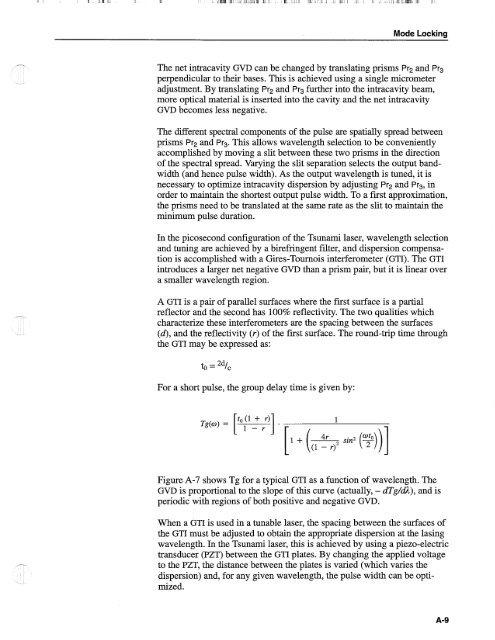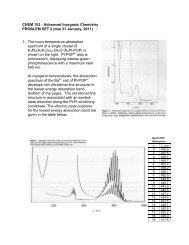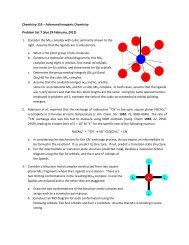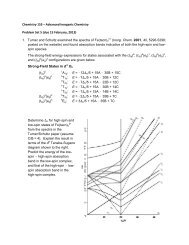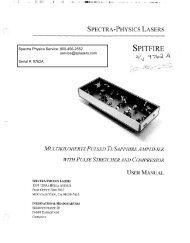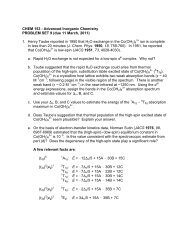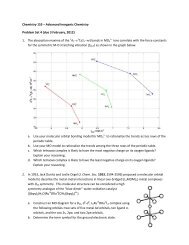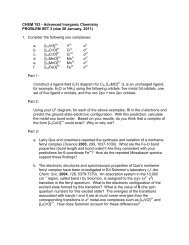Tsunami - Beckman Institute Laser Resource Center
Tsunami - Beckman Institute Laser Resource Center
Tsunami - Beckman Institute Laser Resource Center
Create successful ePaper yourself
Turn your PDF publications into a flip-book with our unique Google optimized e-Paper software.
Mode Locking<br />
The net intracavity GVD can be changed by translating prisms Pr2 and Pr3<br />
perpendicular to their bases. This is achieved using a single micrometer<br />
adjustment. By translating Pr2 and Pr3 further into the intracavity beam,<br />
more optical material is inserted into the cavity and the net intracavity<br />
GVD becomes less negative.<br />
The different spectral components of the pulse are spatially spread between<br />
prisms Pr2 and Pr3. This allows wavelength selection to be conveniently<br />
accomplished by moving a slit between these two prisms in the direction<br />
of the spectral spread. Varying the slit separation selects the output bandwidth<br />
(and hence pulse width). As the output wavelength is tuned, it is<br />
necessary to optimize intracavity dispersion by adjusting Pr2 and Pr3, in<br />
order to maintain the shortest output pulse width. To a first approximation,<br />
the prisms need to be translated at the same rate as the slit to maintain the<br />
minimum pulse duration.<br />
In the picosecond configuration of the <strong>Tsunami</strong> laser, wavelength selection<br />
and tuning are achieved by a birefringent filter, and dispersion compensation<br />
is accomplished with a Gires-Tournois interferometer (GTI). The GTI<br />
introduces a larger net negative GVD than a prism pair, but it is linear over<br />
a smaller wavelength region.<br />
A GTI is a pair of parallel surfaces where the first surface is a partial<br />
reflector and the second has 100% reflectivity. The two qualities which<br />
characterize these interferometers are the spacing between the surfaces<br />
(4, and the reflectivity (r) of the first surface. The round-trip time through<br />
the GTI may be expressed as:<br />
For a short pulse, the group delay time is given by:<br />
Figure A-7 shows Tg for a typical GTI as a function of wavelength. The<br />
GVD is proportional to the slope of this curve (actually, - dTg/dil), and is<br />
periodic with regions of both positive and negative GVD.<br />
When a GTI is used in a tunable laser, the spacing between the surfaces of<br />
the GTI must be adjusted to obtain the appropriate dispersion at the lasing<br />
wavelength. In the <strong>Tsunami</strong> laser, this is achieved by using a piezo-electric<br />
transducer (PZT) between the GTI plates. By changing the applied voltage<br />
to the PZT, the distance between the plates is varied (which varies the<br />
dispersion) and, for any given wavelength, the pulse width can be optimized.


